TOXIC SPILL ANALYSIS
Happy tomato and tadpole tales don’t tell the full story of UPL river devastation
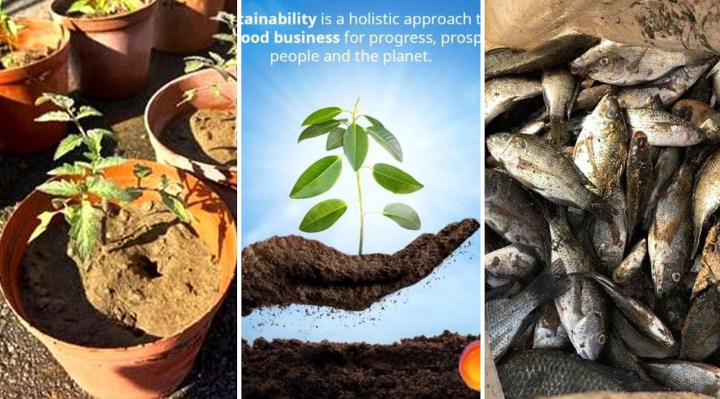
Anyone reading the latest corporate news bulletin from the UPL agrochemicals group is very likely to gain the impression that the ecology is looking peachy, recovering rapidly after a massive chemical spill north of Durban more than two years ago.
In its new Road to Recovery communique, the UPL corporate communications team speaks enthusiastically about the reappearance of tadpoles in a small river tributary near Umhlanga, along with recent potted vegetable plant experiments. Despite being grown in soil once exposed to a torrent of pesticides, herbicides and other agrochemicals from the old UPL Cornubia storehouse in July 2021, the potted tomatoes appear to be flourishing.
“Signs of natural life returning to the tributary and further down to the confluence with the Ohlanga River are being observed, and as recently as September 2023 saw tadpoles present in significant numbers throughout the tributary — a strong sign of recovery.
“Trials to assess the effects of natural degradation in soils affected by the spill have been led with tomato, pepper, radish, and Swiss chard. Vegetables grown in untreated soil collected from the upstream portion of the confluence wetland, have shown no signs of stress after 3 weeks.”
That’s not all.
There has also been “significant progress” with ecological remediation work “across most of the impacted system”.
In fact, says UPL, “The majority of substances related to the spill (both pesticides and metals) are no longer present in the system or are at such low concentrations they cannot be quantified by laboratory testing.
“This indicates the strength of the work which has been done by the broader independent expert team over the past two years to achieve this milestone.”
Good news indeed, it seems.
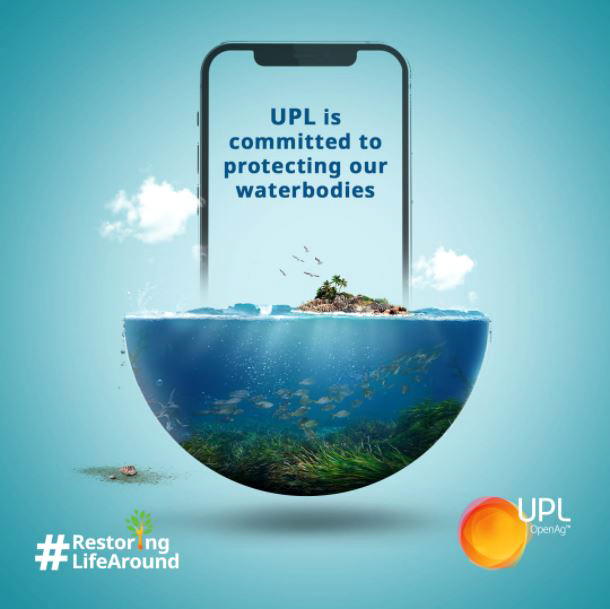
Corporate responsibility adverts on the UPL website. (Image: UPL)
Sadly, the company acknowledges, “some challenges remain” — mainly related to what it refers to as “external pressures” unrelated to the company’s uncontrolled spillage of more than 5,000 tonnes of toxic chemicals, herbicides and heavy metal pollutants after an arson attack during the July 2021 riots.
“Most critically, the high levels of sewage from surrounding communities are impeding the remediation and rehabilitation efforts in these areas,” the company asserts.
In simpler terms, UPL’s residual chemical pollution is now so diminished or so diluted that it’s no longer a big deal. In the company’s version, the real problem lies with sewage overflows from the eThekwini municipality.
Buried chemicals
While sewage pollution in rivers across Durban has been flagged as a major issue, it nevertheless seems remarkable that the UPL communicators skimmed over or completely ignored some more inconvenient facts and opinions provided by its own environmental consultants.
(Readers who wish to interrogate fuller details on these issues can access an extensive repository of documents established by the KwaZulu-Natal Department of Environmental Affairs)
For example, UPL makes no mention of the strong likelihood that several tonnes of toxic chemicals remain buried deep in the muddy sediments of the Ohlanga River and a tributary adjacent to the old UPL warehouse.
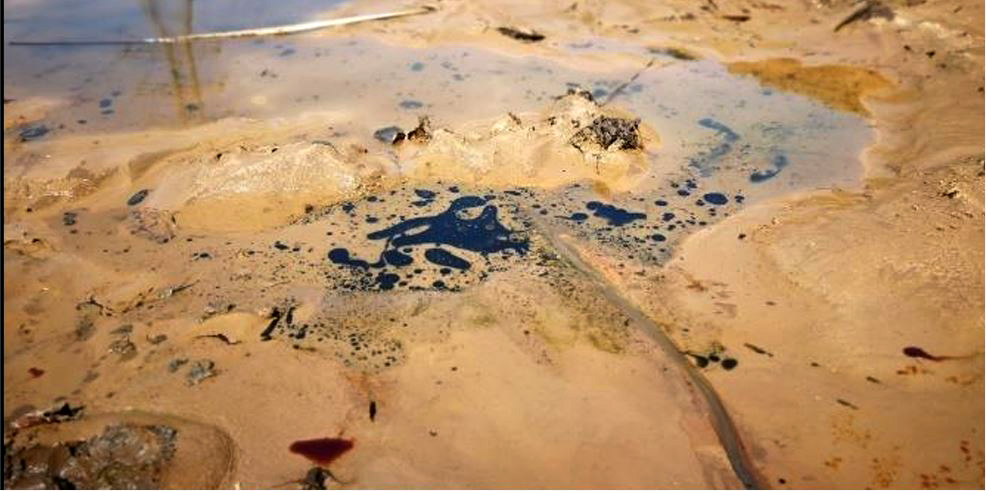
An image of the ‘dark green/black oily substance’ seeping from streambanks close to the old UPL warehouse. (Photo: August 2022 GroundTruth report to UPL)
For several months, UPL environmental consultants have also been monitoring a “dark green/black oily substance” leaching from streambanks and preventing the recovery of vegetation close to the old warehouse.
Initial tests showed that this substance contained “extremely elevated concentrations of pesticides” (along with herbicides such as metolachlor (12,200 mg/L) and acetochlor (6,700 mg/L)) according to an August 2022 report by Dr Mark Graham of the GroundTruth consultancy.
More recently, Graham has estimated that there are roughly 4.2 tonnes of pesticides/chemicals buried deep beneath the soil in a river wetland near Blackburn Village.
“To date [September 2023], there has been limited recovery in the wetland system, with much of the wetland remaining largely denuded of vegetation. The limited recovery seen in the system raises concerns about the extent and severity of contamination residual in the wetland and, possibly more critically, whether the wetland may now be functioning as a source of pollutants that could pose an environmental risk to the downstream system.”
Graham notes that traces of 22 pesticides (including 2,4-D, imidacloprid, MCPA, and propiconazole) were found in one of the samples here — with much higher pesticide levels (over 35,000 ug/kg of tebuthiuron) in another sample from a depth of 390cm.
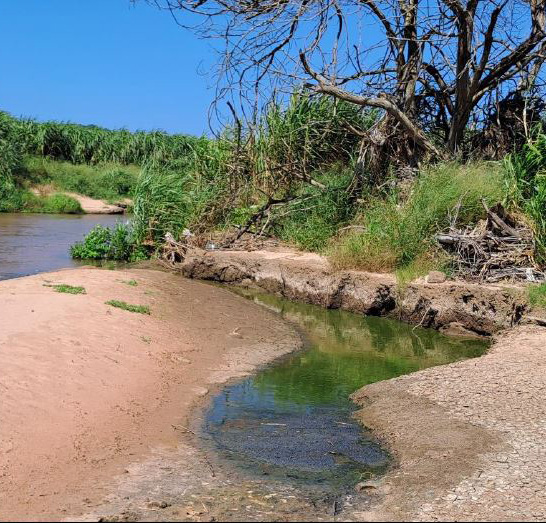
A current ‘hotspot’ of pesticide and herbicide-polluted water next to the Ohlanga River. (Photo: September 2023 GroundTruth report to UPL)
So, while the UPL communique may be correct in suggesting that many of the toxic substances have disappeared or been diluted in several places over the past 28 months, it makes no mention of sections of the river that are still “highly contaminated” to a soil depth of nearly 4m.
Graham maintains that these buried chemicals are unlikely to escape en masse in future to poison human communities lower downstream. But if they do leak out, at some point, the harmful impacts will most likely be to river and plant life, possibly including fish. This is because the chemicals are mostly herbicides and, he suggested, their concentrations will be diluted considerably by fresh water flowing in the Ohlanga River.
However, a second UPL environmental consultant notes in her specialist reports that most life forms in the Ohlanga River Estuary have been all but wiped out by the UPL chemical spill and are showing little sign of recovery more than two years later.
‘Persistent contamination’
Marine and Estuarine Research (MER) scientist Nicolette Forbes notes in her September report that there is no precedent in South Africa for a chemical spill of this magnitude.
While contamination levels in the upper section next to UPL and the lower sections of the river next to the sea had decreased, the main middle reaches of the estuary had been “defaunated”.
Unlike the marine environment at the mouth of the Ohlanga River, she says, the main estuarine ecosystem “continues to exhibit persistent contamination”.
In her words, “the estuary is still nowhere near its pre-spill state”.
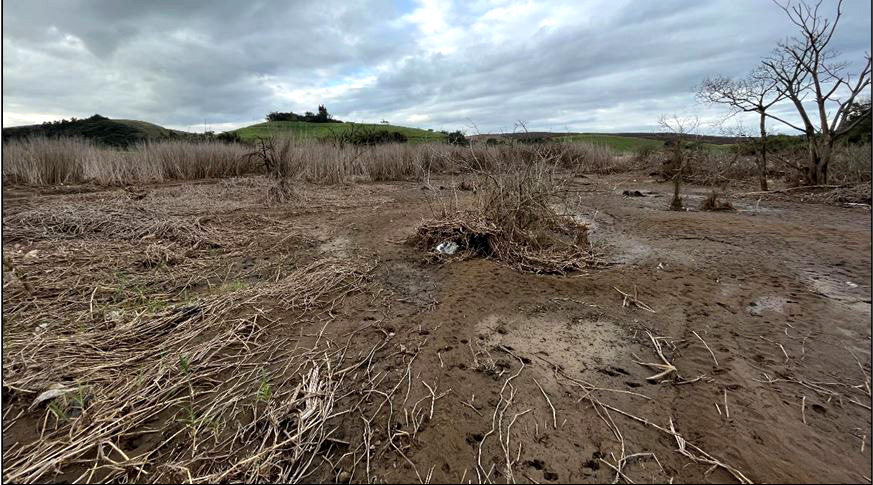
A ground-level view of chemically devastated vegetation in a wetland next to Blackburn Village. (Photo: Groundtruth report to UPL)
At least three pesticide types were still being recorded within the estuary water and sediments, and there had been “significant ecological loss of species and function”.
This included riverine vegetation and crustacean and invertebrate species such as the formerly abundant population of cracker shrimp.
“Notably, the more sensitive crustacean taxa remain absent, which aligns with their vulnerability to biocides.”
Though some fish species had been seen intermittently, it was not clear whether they had arrived via the sea quite recently, or whether they had survived and grown up in the river estuary.
“A number of piscivorous [fish-eating] birds were observed at the estuary with fish prey, but this was during March 2023 only and these observations have not been repeated. The low numbers of bird piscivores and absence of the larger birds such as Goliath heron suggest that the fish population has not been sustained or developed to numbers sufficient to attract more fish-eating species.
“The process of ecological recovery remains gradual, with the current invertebrate community representing a diminished remnant of its former composition, currently comprising only polychaetes, leeches and fly larvae.
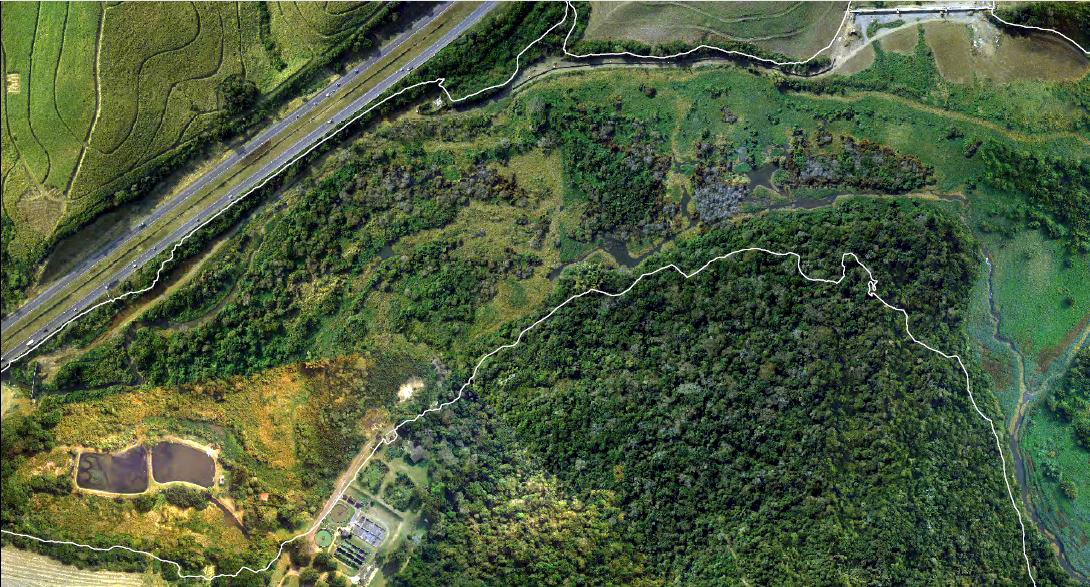
Aerial photographs clearly illustrate the scale of damage to vegetation in the upper parts of the Ohlanga estuary in Durban following the July 2021 UPL chemical fire. Photo taken in August 2021. (Photo: MER report to UPL)
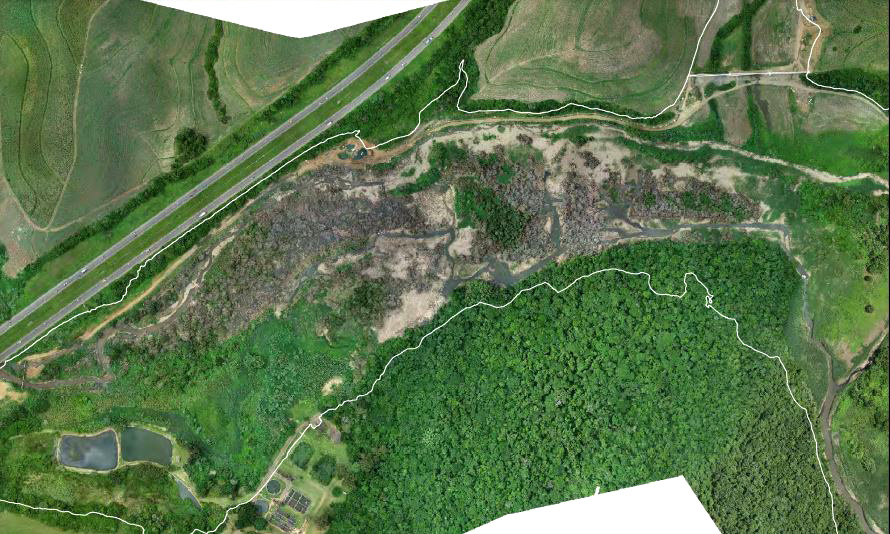
Aerial photographs clearly illustrate the scale of damage to vegetation in the upper parts of the Ohlanga estuary in Durban following the July 2021 UPL chemical fire. Photo taken in December 2021. (Photo: MER report to UPL)
“Given that high levels of contamination still exist at the UPL warehouse platform, in sections of the contaminated tributary and the lower wetland — all upstream of the estuary — it is strongly recommended that measures continue to focus on the remediation of upstream environments. At this stage it is premature to effect any significant interventions such as animal reintroductions while the threat of even the slightest contamination remains.
“The unfortunate overall conclusion at this stage is that the Ohlanga event has no precedent in this country, and one is left with the Northern Hemisphere experience that full functional recovery has to be timed in years and in the worst-case scenario, in decades.
Forbes suggests that it could take 12-15 years for a full recovery of the estuary — a far cry from the more optimistic scenario painted in UPL’s Road to Recovery statement, which forms part of the company’s “extensive efforts to communicate clearly and transparently” in the aftermath of the chemical disaster.
On the issue of transparent communication, it’s noteworthy that Daily Maverick has been barred — twice — from community feedback meetings at UPL’s regional offices in Umhlanga.
Earlier this month, this reporter encountered UPL legal representative Norman Brauteseth in the corridors of the Durban High Court. Noticing that Brauteseth’s left hand was heavily bandaged, Daily Maverick asked what had happened.
“It’s from punching too many journalists… Ha, ha, harr, harr,” he responded.
That might have been an attempt at levity, but it fell rather flat in the circumstances.
(In fact, he had undergone a minor surgical procedure, Brauteseth clarified shortly afterwards)
Six days later, UPL executive Marcel Dreyer wrote a letter to Daily Maverick Editor-in-Chief Branko Brkic to register concerns about the most recent coverage of the chemical spill.
Since Dreyer stated very clearly that his letter was not for publication, the contents will not be reported on here. Suffice to say, he was not happy. DM






















 Become an Insider
Become an Insider
Good article, Tony. Let’s hope that one of the international media organisations like The Guardian pick up on this and give UPL the global opprobrium they deserve. Most of the chemicals you mention are WHO Class 1 toxic substances and have the Regulation (EC) No 1272/2008 H410 phrase ‘Very toxic to aquatic life with long lasting effects.’ Spills such as this are well-known across the world; Seveso and Bhopal come to mind. The difference here is that the main components of the spill did not have the same level of acute human toxicity as TCDD and methyl isocyanate. That means UPL has been able to control the narrative and keep the public in the dark regarding the actual toxicity of these pesticides and herbicides (collectively, biocides). The long term effects of the UPL spill have not been thoroughly publicised except in your journalism. I still can’t understand why UPL or their landlords have not been prosecuted under the NEMA Act (for not carrying out a Major Hazard Installation risk assessment) or under Municipal bylaws (for operating without a Scheduled Activity Permit).
Everyone hates pesticides (the term includes insecticides, acaricides, fungicides and herbicides so no need to say ‘pesticides and herbicides’) until they see a cockroach in their kitchen. Or a mosquito disturbs their sleep. Or late blight devastates their potato crop.
Yes. But you don’t spray the whole can at once in your bedroom to kill one mosquito. It’s all about proper application and use according to the guidelines.
Thank-you Tony for your continued pursuit of this catastrophe in spite of the obstacles which have been put in your way in eliciting the truth about the full extent of the damage these toxic spills. We will feel the effects of these toxins for many years.